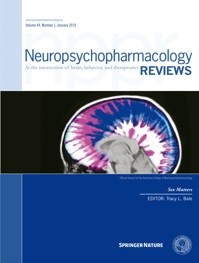 “To provide an up-to-date summary of the benefits and harms of cannabis-based products for epilepsy in children.
“To provide an up-to-date summary of the benefits and harms of cannabis-based products for epilepsy in children.
METHODS:
We updated our earlier systematic review, by searching for studies published up to May 2019. We included randomized controlled trials (RCTs) and non-randomized studies (NRS) involving cannabis-based products administered to children with epilepsy. Outcomes were seizure freedom, seizure frequency, quality of life, sleep, status epilepticus, death, gastrointestinal adverse events, and emergency room visits.
RESULTS:
Thirty-five studies, including four RCTs, have assessed the benefits and harms of cannabis-based products in pediatric epilepsy (12 since April 2018). All involved cannabis-based products as adjunctive treatment, and most involved cannabidiol. In the RCTs, there was no statistically significant difference between cannabidiol and placebo for seizure freedom (relative risk 6.77, 95 % confidence interval [CI] 0.36-128.38), quality of life (mean difference [MD] 0.6, 95 %CI -2.6 to 3.9), or sleep disruption (MD -0.3, 95 %CI -0.8 to 0.2). Data from both RCTs and NRS suggest that cannabidiol reduces seizure frequency and increases treatment response; however, there is an increased risk of gastrointestinal adverse events.
CONCLUSION:
Newly available evidence supports earlier findings that cannabidiol probably reduces the frequency of seizures among children with drug-resistant epilepsy.”
https://www.ncbi.nlm.nih.gov/pubmed/31865133
https://www.seizure-journal.com/article/S1059-1311(19)30733-2/fulltext

 “Glioma-related epilepsy significantly impact on patients’ quality of life, and can often be difficult to treat. Seizures cause significant morbidity for example neurocognitive deterioration, which may result from seizures themselves or due to adverse effects from antiepileptic drugs. Management of tumour with surgery, radiotherapy and chemotherapy may contribute to seizure control, but tumour related epilepsy is often refractory despite adequate treatment with standard anti-epileptic medications. Given the increasing interest in medicinal cannabis (or
“Glioma-related epilepsy significantly impact on patients’ quality of life, and can often be difficult to treat. Seizures cause significant morbidity for example neurocognitive deterioration, which may result from seizures themselves or due to adverse effects from antiepileptic drugs. Management of tumour with surgery, radiotherapy and chemotherapy may contribute to seizure control, but tumour related epilepsy is often refractory despite adequate treatment with standard anti-epileptic medications. Given the increasing interest in medicinal cannabis (or  “This review focuses on the possible roles of phytocannabinoids, synthetic cannabinoids, endocannabinoids, and “transient receptor potential cation channel, subfamily V, member 1” (TRPV1) channel blockers in epilepsy treatment.
“This review focuses on the possible roles of phytocannabinoids, synthetic cannabinoids, endocannabinoids, and “transient receptor potential cation channel, subfamily V, member 1” (TRPV1) channel blockers in epilepsy treatment. “Heroin (diamorphine) is a highly addictive opioid drug synthesized from morphine. The use of heroin and incidence of heroin associated overdose death has increased sharply in the US.
“Heroin (diamorphine) is a highly addictive opioid drug synthesized from morphine. The use of heroin and incidence of heroin associated overdose death has increased sharply in the US. “Bone metabolism is strictly regulated, and impaired regulation caused by hormonal imbalances induces systemic bone loss. Local bone loss caused by tumor invasion into bone is suggested to be induced by the generation of cytokines, which affect bone metabolism, by tumor cells.
“Bone metabolism is strictly regulated, and impaired regulation caused by hormonal imbalances induces systemic bone loss. Local bone loss caused by tumor invasion into bone is suggested to be induced by the generation of cytokines, which affect bone metabolism, by tumor cells.
 “Pantothenate kinase-associated neurodegeneration is characterized by severe, progressive dystonia. This study aims to describe the reported usage of cannabis products among children with pantothenate kinase-associated neurodegeneration.
“Pantothenate kinase-associated neurodegeneration is characterized by severe, progressive dystonia. This study aims to describe the reported usage of cannabis products among children with pantothenate kinase-associated neurodegeneration. “Chronic pain affects a significant percentage of the United States population, and available pain medications like opioids have drawbacks that make long-term use untenable.
“Chronic pain affects a significant percentage of the United States population, and available pain medications like opioids have drawbacks that make long-term use untenable. “Despite improvements in medical care, patients with advanced cancer still experience substantial symptom distress. There is increasing interest in the use of medicinal
“Despite improvements in medical care, patients with advanced cancer still experience substantial symptom distress. There is increasing interest in the use of medicinal  “Cannabidiol (CBD) has emerged as a potential agent for breast cancer management.
“Cannabidiol (CBD) has emerged as a potential agent for breast cancer management.